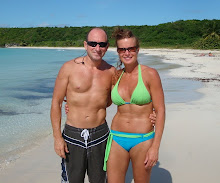A Puzzling 'Blackout' at Puerto Rico's Famous Bioluminescent Bay
Jenny Xie, The Atlantic CitiesNov 22, 2013

Bioluminescence, the neon-blueish glow produced by microscopic plankton when they sense movement, is one of the most magnificent natural phenomena. Unsurprisingly, the world's few remaining bioluminescent bays have become top tourist destinations. Kayak and boat tours allow visitors to streak the water and observe the magic glow.
But in Puerto Rico, one of these bio-bays has gone dark. And no one knows why.

The bioluminescent Grand Lagoon in Fajardo, Puerto Rico. (AP Photo/Herminio Rodriguez)
Near the Grand Lagoon in Fajardo, Puerto Rico, the glow hasn't been seen since November 11. According to the AP, tour operators have had to cancel excursions and reimburse visitors. "We've never seen anything like that," Fajardo Mayor Anibal Melendez told reporters.
Earlier this week, Department of Natural Resources Secretary Carmen Guerrero and a team of scientists traveled to the lagoon to collect data and try to figure out what's causing the darkness. They think many factors could be at play, including storms generating big waves and the clearing of mangroves to make way for larger boats in the area.
Another factor is runoff from the construction of a nearby water and sewer plant. The plant, expected to be completed in 2016, is actually designed to protect the lagoon from sewage discharge. Officials involved say that since the goal of the project is conservation, it's been inspected to comply with environmental standards. As a precaution, however, the government has suspended the plant construction for two weeks while the scientists examine water samples.
Any of those disruptions could be at fault, since the plankton depend on a delicate balance of nutrients, vitamins, and water temperature and quality. However, Miguel Sastre, a biology professor at the University of Puerto Rico, is most concerned about the construction runoff, since the timing coincides with the darkened bay. Sastre told the AP that Fajardo's bio-bay had previously gone dark in 2003 for reasons unknown, but the glow returned a few months later.
Hopefully Fajardo will bounce back once again. But the deterioration of Puerto Rico's bio-bays has been a consistent concern. The government has also been exploring ways to protect Mosquito Bay in Vieques, considered one of the brightest in the world. They want to prevent light pollution and improve road access so that sediment doesn't get in the water.
One of the biggest and perhaps most obvious challenges is figuring out how bio-bays and humans should co-exist. Earlier this year, Secretary Guerrero said there are no limits on visitors. Imposing tourist restrictions would be tricky, as the thousands of visitors who come for the glowing lagoons are a key component of the local economy.
According to news agency EFE, 11 boat and kayak tour companies operate in the Fajardo area, and bio-bay tourism contributes to 700 jobs in the area.


No comments:
Post a Comment